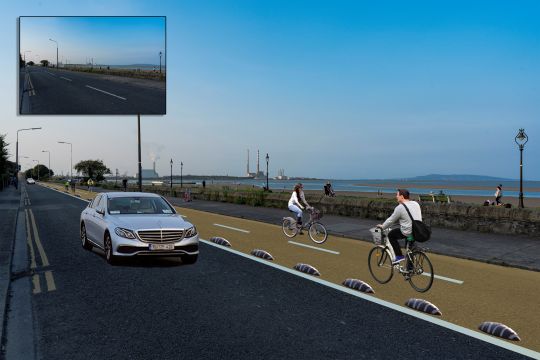There would be no authorisation for maintaining a Sandymount cycle lane beyond its six-month trial period under its proposed permission lawyers for Dublin City Council have said.
Stephen Dodd SC told the Court of Appeal on Wednesday that council management has given sworn evidence this would be a temporary trial and made it “crystal clear” that the council’s decision, which was overturned by the High Court, permits it to be in operation for six months only.
An extension of the two-way cycle path’s lifespan beyond this point would equate to a “fresh decision” requiring a “fresh assessment”, including an Environmental Impact Assessment (EIA) if required, Mr Dodd said.
Planning process
The council is appealing a High Court ruling in favour of local independent councillor Mannix Flynn and Sandymount resident Peter Carvill.
Mr Justice Charles Meenan ruled last July that the proposed cycleway must be subject to an EIA and, therefore, would need to go through the planning process. He said the project went “beyond signs and certain road markings” and is within the nature of building or construction.
It envisages turning what is currently a two-way vehicular stretch of road along the coast into a single outbound lane with the other lane used as a two-way cycle track. It would require the removal of a traffic island at the junction of Strand Road and Merrion Road, as well as the removal of some mini-roundabouts and the installation of bollards, the judge said.
The council argued on Wednesday that the judge erred in inferring that the council would act illegally in allowing the trial to continue beyond the six-month period without the correct assessments.
Mr Dodd, with Stephen Hughes BL, said data would be collated during the course of the first five months of the trial and this will be made available to the public for consultation, he said. The final month of the term is earmarked as a review period.
The cycle path would need to be removed if renewed or permanent permission was not obtained before the six-month expiry, he said.
Mr Dodd said the High Court’s findings have “serious implications” for how the council conducts various routine traffic management projects. He submitted that the temporary plan does not constitute “road development”.

For Mr Flynn and Mr Carvill, lawyers said the EIA and Habitats directives do not allow for “try before you buy” development.
Neil Steen SC, with David Browne BL, said assessments must be carried out in advance of works. Even if it is preferable and common sense to obtain some real-world data through a physical trial prior to these assessments, it is “simply impermissible” under these European directives, Mr Steen added.
He submitted that the temporary cycle project is “most unusual” in that it has not been subject to any third-party scrutiny, as it was designed and approved by the council itself.
The appeal before Ms Justice Mary Faherty, Mr Justice David Barniville and Mr Justice Maurice Collins is due to conclude on Thursday.







